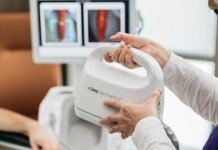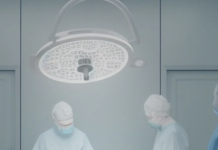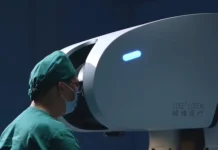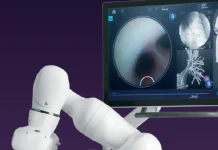The US Food and Drug Administration (FDA) has cleared NeurAxis’ percutaneous electrical nerve field stimulation (PENFS) system for treating pain linked with a chronic type of gastrointestinal disorder.
NeurAxis’ device is indicated for the treatment of functional abdominal pain (FAP) associated with functional dyspepsia (FD) in patients aged eight years and above.
Placed behind a patient’s ear, Indiana-based NeurAxis’ IB-Stim delivers electrical impulses into cranial nerve bundles located in the ear, targeting specific brain regions that help reduce FD-associated pain.
Related: Edge Medical wins CE mark for MSP2000 surgical robot platform
Research indicates that up to 25% of the US population is affected by FD to some extent. Often characterised by severe abdominal pain and nausea, the condition can significantly impact individuals’ quality of life, resulting in food avoidance, unintentional weight loss, and restrictive eating behaviours.
NeurAxis’ expanded FDA clearance was based on results from randomised control trials and real-world evidence demonstrating the device’s safety and effectiveness. IB-Stim is already approved for treating functional abdominal pain associated with irritable bowel syndrome (IBS) in adolescents aged 11 to 18 years.
According to data published on the company’s website, IB-Stim resulted in at least a 30% improvement in worst pain (abdominal) at the end of three weeks’ treatment in 59% (16/27) of patients, versus 26% (6/23) in the active and sham groups, respectively – as measured on the Symptom Response Scale (SRS).
Neuraxis’ CEO Brian Carrico said: “This latest FDA clearance represents a pivotal milestone for NeurAxis as it is the first ever FDA approved for cleared treatment in the adult market for functional dyspepsia which also includes related nausea symptoms.
“By reaching this goal, it will not only broaden our clinical impact but also positions us to drive substantial revenue growth throughout the GI space in all patients 8 years of age and older.”
Neuromodulation is now accelerating toward real-world breakthroughs for other conditions such as tinnitus, substance use disorder, Parkinson’s disease and epilepsy. A report by GlobalData forecasts that the global neurological devices market will reach a valuation of $20.9bn by 2033, up from $12.5bn in 2023.
While the FDA has approved a wealth of neuromodulation devices for various chronic conditions, research indicates there still exists a gap for products specifically designed for paediatric patients.






